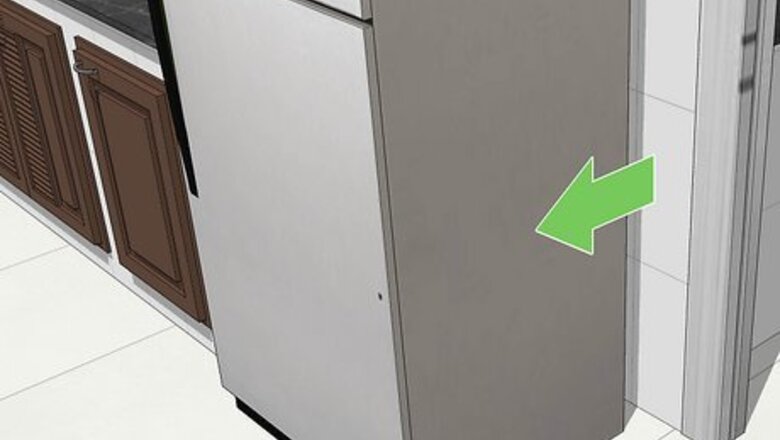
views
Setting Up Your Freezer Correctly
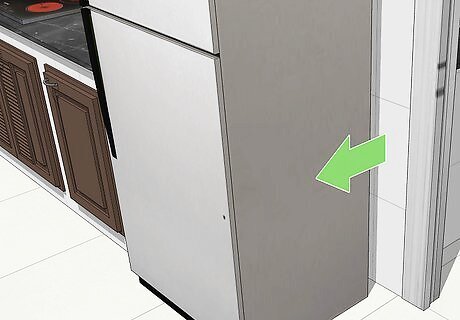
Make sure your freezer is functioning properly. If you are noticing a lot of ice build up in your freezer, it may be a sign that something isn't functioning correctly. One potential problem is is blocked airflow. Freezers need to have proper airflow around the cooling coils and vents. If any of the freezer's vents or coils are dirty, blocked or clogged, this could cause an issue with ice build up. Condenser coils are usually located in the back of the freezer, towards the bottom of the refrigerator. You'll likely need to remove a panel to access them. Some refrigerators will have condenser coils that run up and down the entire back of the fridge. Use a soft brush to gently remove dust and dirt from the coils. Check the vents inside the freezer itself. Make sure there is no ice or food items clogging them up. Your freezer may be too close to a wall to allow for proper ventilation. Try moving your freezer away from any walls or tight spaces.
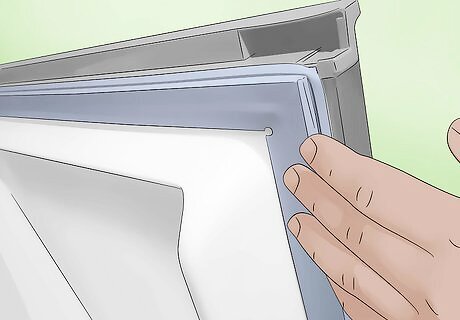
Check the seal on your freezer door. Your freezer door should create an airtight seal when it's closed. However, if the seal itself is old or warped, it may be allowing air to flow in and out of the freezer. Airflow will cause ice to build up rapidly in your freezer. Check your freezer door's seal to make sure there are no spaces where air is escaping. Make sure something in the freezer isn't holding the door open a bit. There may be a tiny space where air is entering the freezer. Run your hand along the edge of the seal to feel for any loose or cold areas. You may need to replace older magnetic seals if they are no longer functioning. You can try wiping the seal down to remove any buildup that may be preventing an airtight lock.

Set your freezer to the right temperature. Setting your freezer's temperature either too high or too low can cause excess ice to build up. In order to prevent these freezer crystals from accumulating, it can be a good idea to take a look at your freezer's thermometer. Try to adjust the thermometer to an ideal temperature to reduce the amount of ice that is forming in your freezer. Your freezer should be set to 0°F or -18°C. Make sure you don't change the temperature by opening the door too often or by not closing it all the way.
Keeping Air Out of Your Freezer
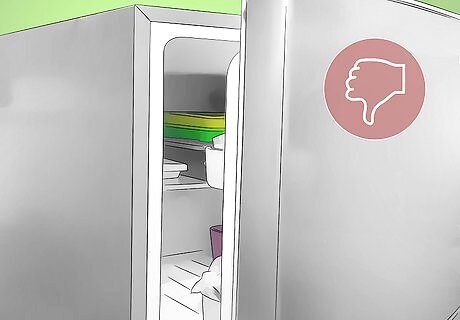
Don't leave the door open for long. Anytime you open the door on your freezer, warm air will come rushing in. When this warm, moist air enters the freezer it will immediately freeze onto any surface it touches. Always open and close your freezer door quickly to avoid any unnecessary ice build up in your freezer. Only open the door when you need to put something in or take something out. Avoid looking too long for something in the freezer. Only open the door when you are ready to take it out. Always make sure the door is fully and completely shut when you close it.
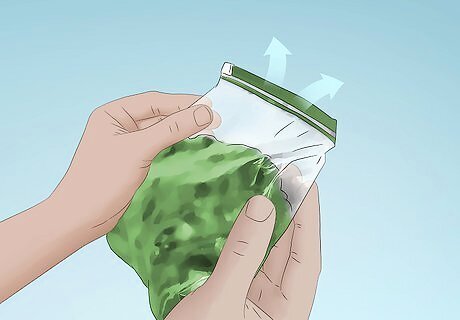
Take the air out of any bags. Much of the ice that forms in a freezer comes from the moisture in the food. In order to help cut down on the amount of ice in your freezer, it can be helpful to take air out of any freezer storage bags. Removing the air will trap the moisture in the food, instead of allowing it to escape and turn into ice elsewhere in your freezer. Squeeze the air out of any plastic freezer bags that you store food in. You can use a drinking straw to suck most of the air out of a bag, creating a near vacuum seal. Any resealed bags should be closed tightly, leaving little room for air. Solid containers should be full of food to avoid leaving much space for air. Make sure any containers with lids are securely shut. Try to use storage bags that are specifically designed for freezers.
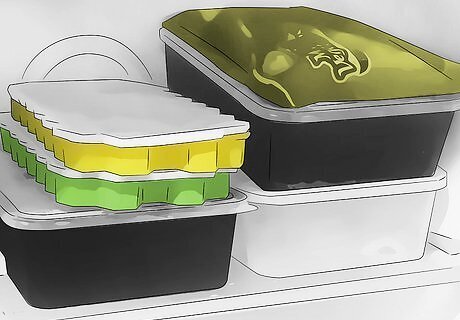
Keep your freezer full. More air in your freezer will mean more ice build up. Freezers that are full of food will usually have slower rates of ice buildup than empty ones. Whenever possible, try to keep your freezer well stocked to cut down on the amount of empty space. Keeping your freezer full will help reduce the amount of freezer crystals you have to contend with.
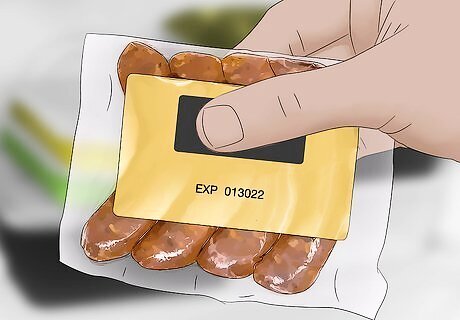
Don't store food for too long. Storing food in your freezer can be a great way to keep perishable food items safe. However, storing food too long can cause it to lose its moisture, resulting in freezer burn. The lost moisture will accumulate inside your freezer and create more ice crystals. Try to remove food that has been stored for a long time to help prevent the buildup of freezer crystals. Write the date on something you are adding to your freezer. This will help you track how long it's been stored. Freezer burn will take months to occur. Try to use or remove items that have been stored for more than a few months.
Defrosting Your Freezer
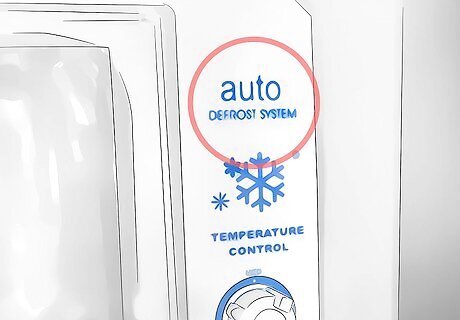
Learn if your freezer has an auto-defrost feature. Most modern freezers will have an automatic defrosting function. This feature will automatically remove any freezer crystals that might have built up. However, older freezers will not have this feature and will require you to manually defrost it. Check with your freezer's instruction manual to learn more about its features.
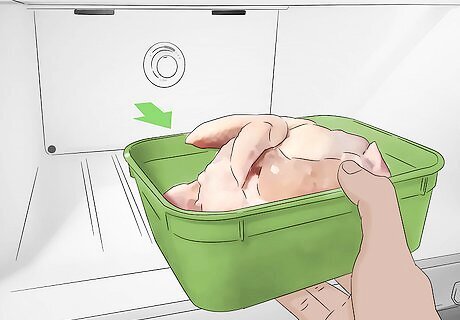
Remove all the food from the freezer and unplug it. Before you defrost your freezer, you will need to remove all items from it. Place your frozen items in another freezer or cold place. This will give you room to work with and will prevent frozen items from defrosting. After everything is removed, including the shelves, you can unplug the freezer. You may need to use a friend or family member's freezer while you defrost. You could also store your food in a cooler while your work to defrost your freezer.

Get ready to deal with melt water. Once your food has been removed from your freezer, you'll be ready to defrost. However, it's a good idea to get ready for the melting ice. You'll want something to catch the water as it comes out of the freezer. Having a good way to catch the melt water can help prevent a big mess. Get some old rags ready to lay along the front of the freezer. These will help soak up ice water as it melts. Having a bucket handy can help you store the melt water before dumping it. Keep a mop ready for any water that spills onto the floor.
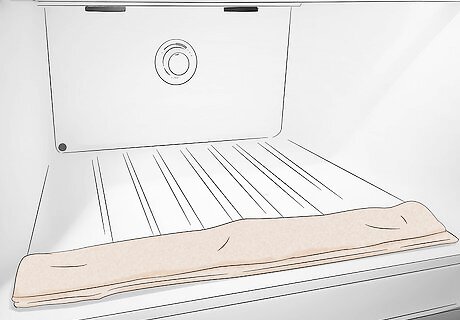
Hold the door open and allow ice to melt. Once everything is removed from the freezer and it has been unplugged, you can begin defrosting. Find something to hold the door open with, allowing warm air into the freezer to melt the ice. The goal is to wait for all of the ice to melt or get to a point where it can be removed by gently scraping it away with a spatula. You can add a pot of hot water to the freezer to help speed up the defrosting process. You might try using a fan to move air in and out of the freezer. Avoid using a hairdryer as this can be a safety hazard as the ice melts. Never use anything sharp to break up ice.
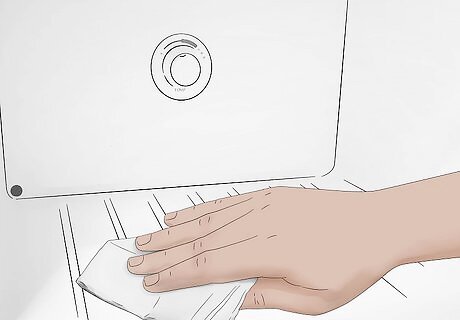
Clean your freezer. Now that the ice has been removed from your freezer and it is completely empty, you can give it a good cleaning. Take a cloth and some gentle cleaning solution and wipe down the inside of the freezer. Take your time and make your freezer as clean as you can before adding your food back in. Any mild detergent will work fine for cleaning your freezer. You can make a simple cleaner by mixing 3 tablespoons of baking soda into 1 quart of water.
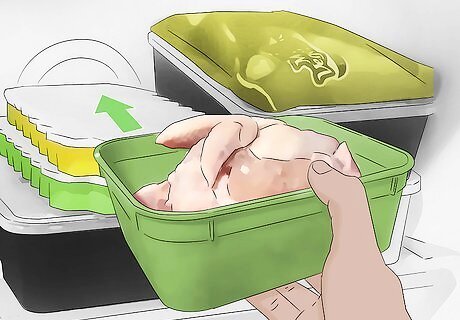
Put the food back in and turn the freezer on again. Now that your freezer has been defrosted, cleaned and dried, you can put your food back in and turn it on again. Your freezer should run much more efficiently and all of the ice crystals will be gone for a while. Keep an eye on the build up of ice and defrost again whenever necessary. The more you let ice build up in your freezer, the longer the defrosting process will take. Make sure your freezer is totally dry before putting food back in. Any moisture will refreeze and cause ice to quickly build up again.



















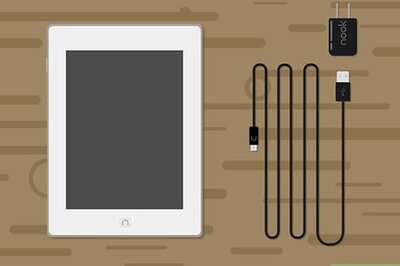
Comments
0 comment